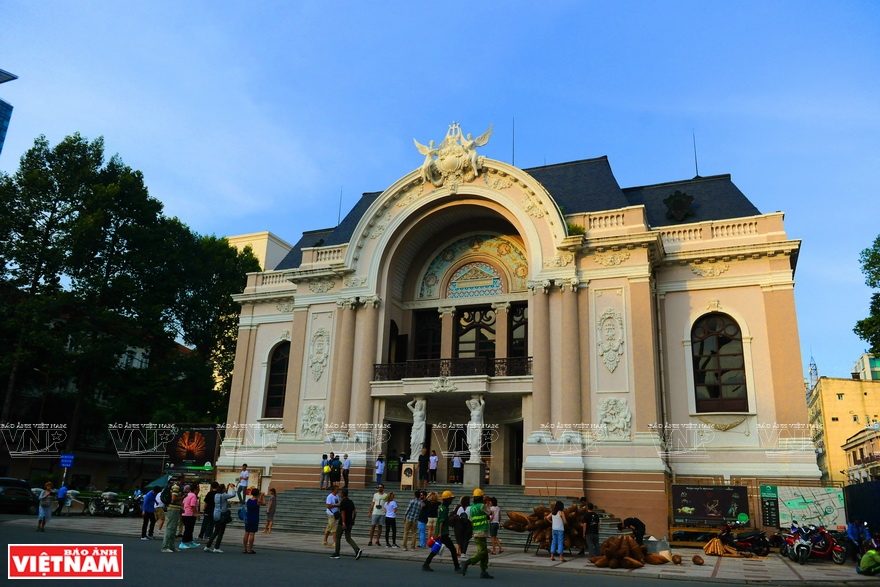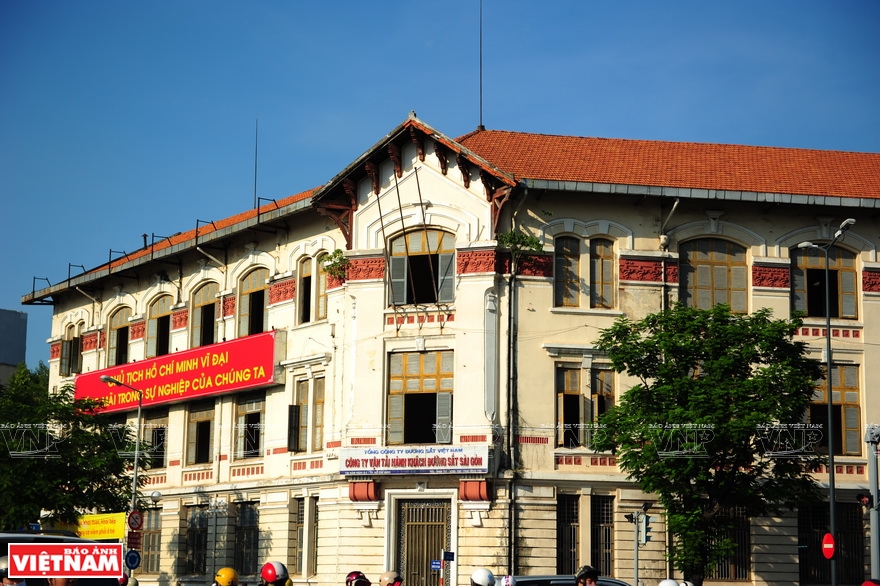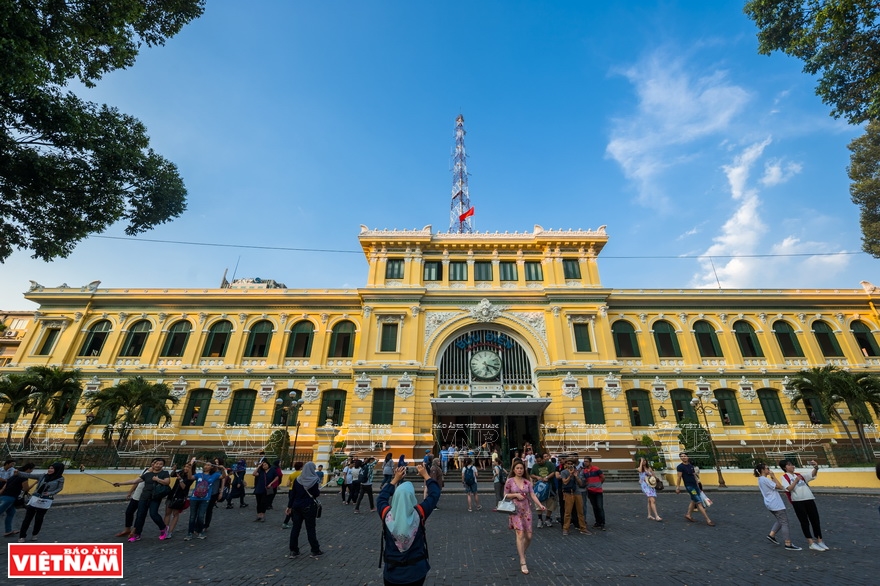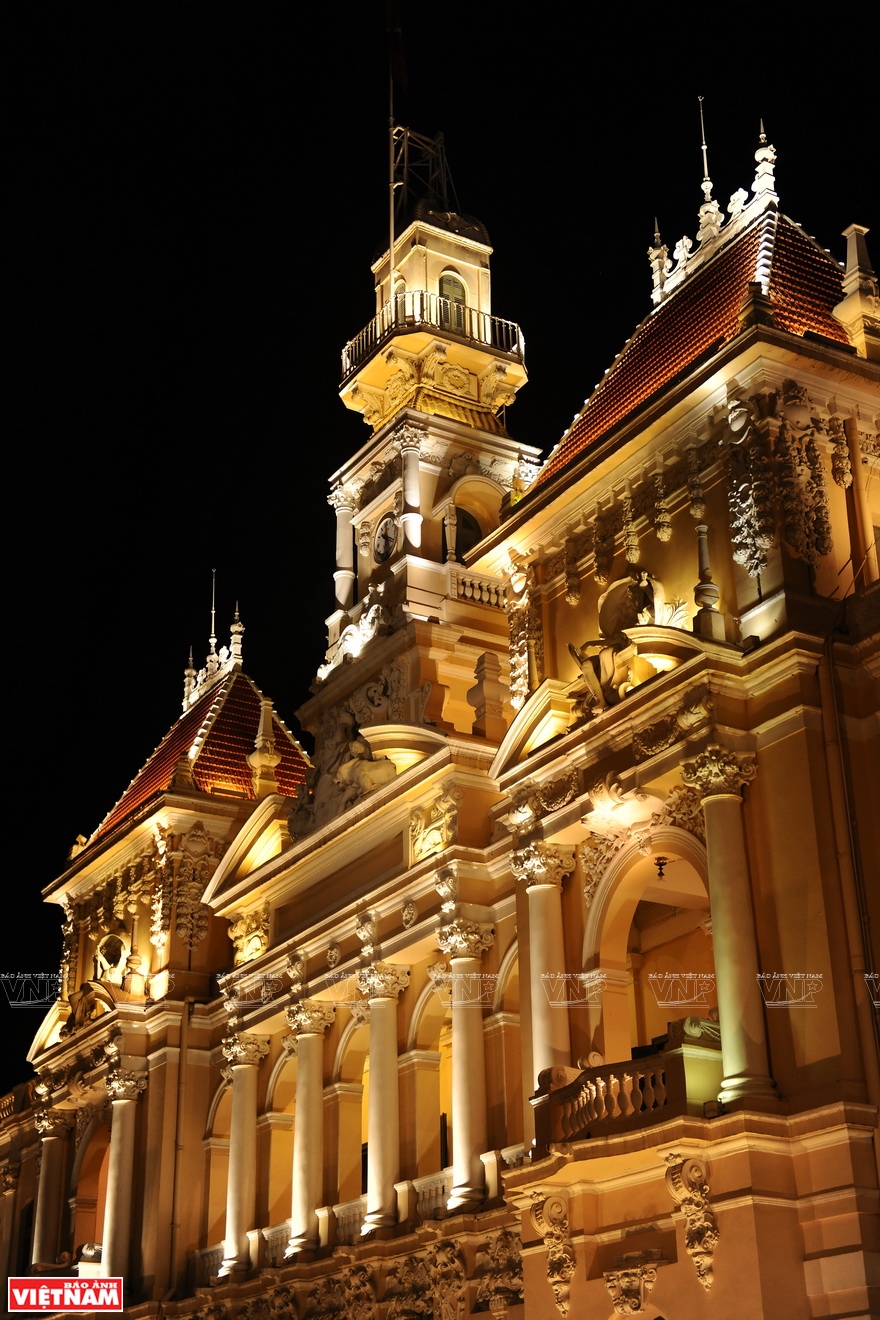
Designed by architect J. Bourard, the Notre-Dame Cathedral Basilica of Saigon was built from 1877 to 1880.
All the building materials were imported from France. Its facade was built with a special type of brick from Toulouse
which are dust- and moss-resistant and thus keep their original color. Photo: Ba Ngoc

Located on Dong Khoi road, district 1, the Municipal Theater of Ho Chi Minh City was built from 1898 to 1900.
The theater was refurbished in 1998 but its original architecture was kept, being an attractive destination of the city. Photo: Ba Ngoc

Saigon Railway Transport Company Limited’s headquarters on Ham Nghi street, district 1
used to be the ticket counter of the Indochina railway company. Photo: Ba Ngoc

The Saigon Central Post Office is located opposite the Notre-Dame Cathedral Basilica of Saigon in district 1.
Designed by French architect Villedieu and his assistant Foulhoux, the post office was constructed between 1886-1891,
and is a tourist attraction of the city. Photo: Ba Ngoc

The office of the Ho Chi Minh City People Committee on Le Thanh Ton street, district 1
is one of the city’s most popular old architectural structures. Built from 1898 to 1909,
the building was designed by French architect Femand Gardes after the model of belfries in northern France. Photo: Ba Ngoc

The Museum of Vietnamese History located at No.2, Nguyen Binh Khiem street, district 1 was designed by French architect Delaval,
and constructed from 1926 to 1928. The museum displays nearly 30,000 objects and 25,000 documents
and books on archaeology, ethnology, histology and museology. Photo: Ba Ngoc |




